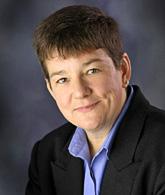 I recently had a very interesting conversation with someone about the new DSM-5 codes. Or maybe it was about the ICD-10 codes for behavioral health. Or perhaps it was about both.
I recently had a very interesting conversation with someone about the new DSM-5 codes. Or maybe it was about the ICD-10 codes for behavioral health. Or perhaps it was about both.
One of the first things you will notice about the DSM-5 and the ICD-10 CM Chapter 5 diagnoses is the problem we have with the language used to describe certain conditions.
For those of you who have seen my presentations, you will remember some of the discrepancies between the two manuals I have discussed (with ICD-10 listed first): Asperger’s versus Autism Spectrum Disorder; Premenstrual Tension Syndrome versus Premenstrual Dysphoric Disorder, Mania versus BiPolar, Emotionally Unstable Personality Disorder: Borderline Type versus Borderline Personality Disorder, and Hyperkinetic Disorder versus ADHD, to name just a select few.
Assigning a diagnostic code, the corresponding diagnostic description, then explaining that to a consumer is not a job I would want to have if I had to use the ICD. Nor would I want to write down the differing diagnoses, for different purposes (DSM for clinical documentation versus ICD for reimbursement) in the same medical record.
Furthermore, sorting out the CMS guidelines about medical record documentation is simply overwhelming. Interestingly enough, the DSM-5 alludes to these guidelines as though everyone is already familiar with the ICD-10 Coding Guidelines.
But what has peaked my interest is the notion that perhaps there are no DSM-5 codes anymore, or are there? I suspect the American Psychiatric Association, publisher of the DSM’s, has an opinion. Where, for example, does it say in the new DSM-5 book that the codes listed next to the diagnoses are DSM codes? Or are they ICD-10 codes? The DSM-5 actually states: “Before each disorder name, ICD-9-CM codes are provided, followed by ICD-10 codes in parentheses.” (pg. xiii).
It’s likely I missed something. It is also equally likely that there are discrepancies within the DSM-5 itself (see Allen Frances here). It is just hard to discern and sort out. It would be much simpler if we had just one codeset to know.
What happens when we have a diagnosis in the DSM-5 that is not contained in the ICD-10 (for example: Disruptive Mood Dysregulation Disorder)? Does that mean F34.8 is a DSM-5 code even though the corresponding F34.8 in the ICD-10 is called “Other Persistent Mood Disorder?” Wait, do we have DSM-5 codes?
The deeper I get in the curriculum and content, the more confusing it seems to get. I feel for the graduate students today who continue to be largely taught the DSM-way of diagnosing and coding. Very few graduate schools actually teach the ICD manuals and perhaps it is time to start the transition. ICD-11 will not rectify many of these issues and I predict the discrepancies will persist. By the way, ICD-11 isn’t due out until at least 2017, so sorting out these challenges will be a necessity for you. And to the stunned private practitioner I spoke with in the last week: “Yes, the new DSM-5 is really in effect now.”
If someone has a clear directive on how to reconcile these differences from the powers that be, please let me know. I will in turn let everyone else know. In the interim, your task as providers will be to sort through the conundrum and decide how you want your provider organization to proceed.
——————————————————
Prepare For The Medical Coding Certification Exam Here!
Originally published on: Behavioral Healthcare
Follow Medical Coding Pro on Twitter: www.Twitter.com/CodingPro1
Like Us On Facebook: www.Facebook.com/MedicalCodingPro







This Post Has 2 Comments
Pingback: ICD-10 and DSM-5: The Language and Coding Conundrums | scrubs and suits
Pingback: ICD-10 and DSM-5 Part 2: Language and Coding | MedicalCodingNews.Org
Comments are closed.